Welcome to the exciting world of home automation! If you’ve ever imagined a home that responds to your needs, saves you energy, and offers enhanced security, then exploring a smart home for beginners is your perfect starting point. Home automation, also known as domotics, involves using technology to control and automate various aspects of your home, from lighting and climate to entertainment and security systems [1]. This guide will demystify the process, offering clear, actionable steps for anyone looking to take their first smart steps.
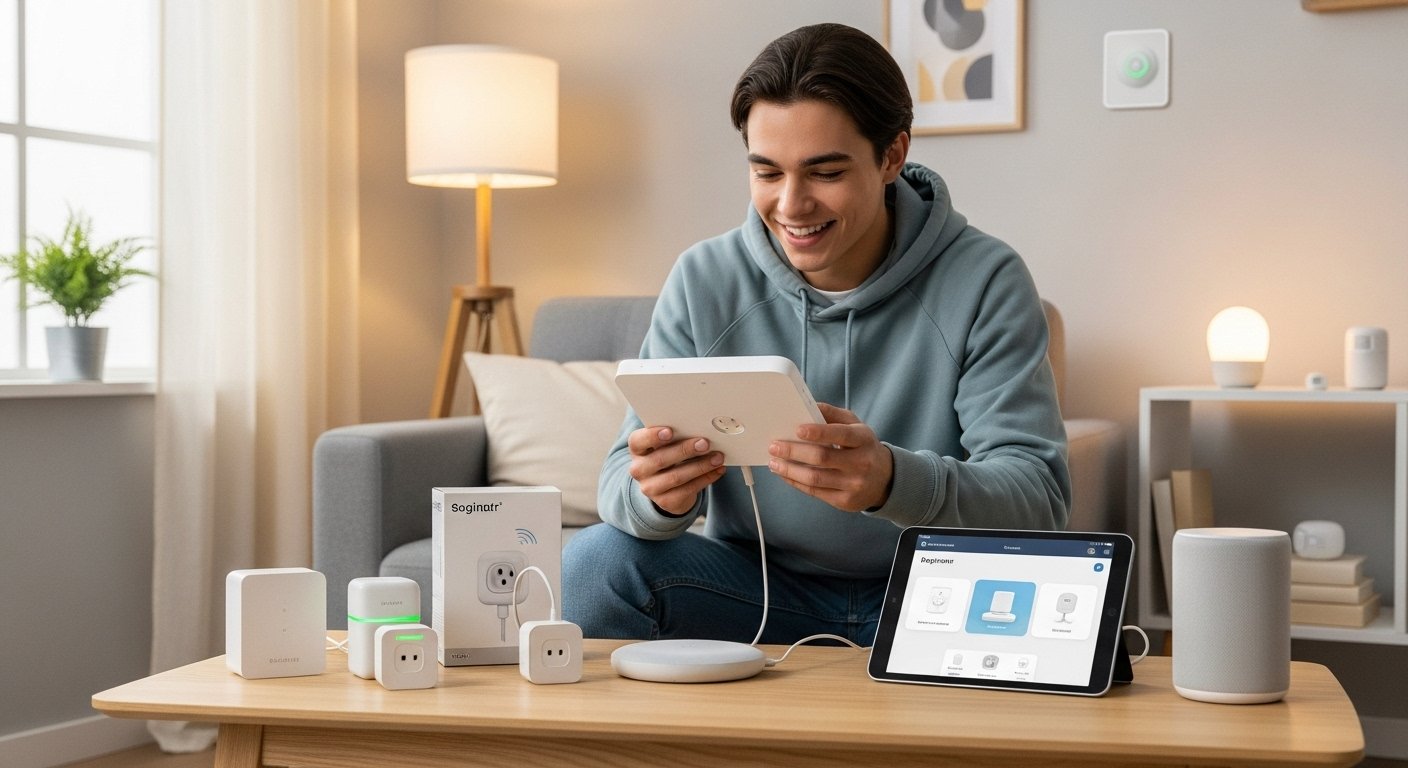
The concept of a smart home is rapidly expanding. The global smart home market size is forecast to increase by USD 255.2 billion, at a Compound Annual Growth Rate (CAGR) of 23.5% between 2024 and 2029 [14]. This growth highlights a clear trend: smart homes are becoming a mainstream reality. In fact, 63% of US households are projected to have at least one smart home device in 2025 [13]. So, if you’re wondering what smart home automation is and how it can benefit you, you’re in the right place at the right time.
What is Smart Home Automation, and Why Start Automating Your Home?
At its core, smart home automation is about connecting devices and systems in your home so they can communicate and be controlled, often remotely or automatically. Think of it as giving your home a brain, allowing various components like lights, thermostats, and security cameras to work together seamlessly [6]. This integration enhances convenience, comfort, and energy efficiency [7].
Why should you consider automating your home? The benefits are compelling:
- Convenience: Control devices with your voice using assistants like Amazon Alexa or Google Assistant, or manage them through a smartphone app from anywhere [10]. Imagine adjusting your thermostat from your bed or turning off all the lights with a single command as you leave the house [3].
- Energy Savings: Smart devices can optimize energy usage. Smart thermostats learn your preferences and adjust temperatures accordingly, and smart lighting can turn off in empty rooms, significantly reducing waste [27], [31]. In fact, 56% of global consumers cite energy savings as the top reason for adopting smart home technology [13].
- Enhanced Security: Smart home security for beginners often includes simple devices like video doorbells and smart locks, allowing you to monitor your home remotely and receive alerts for unusual activity [5], [18].
- Comfort and Personalization: Automate tasks like opening blinds in the morning, playing your favorite music when you arrive home, or adjusting the ambiance of a room to your mood [4]. Your home can truly adapt to your lifestyle.
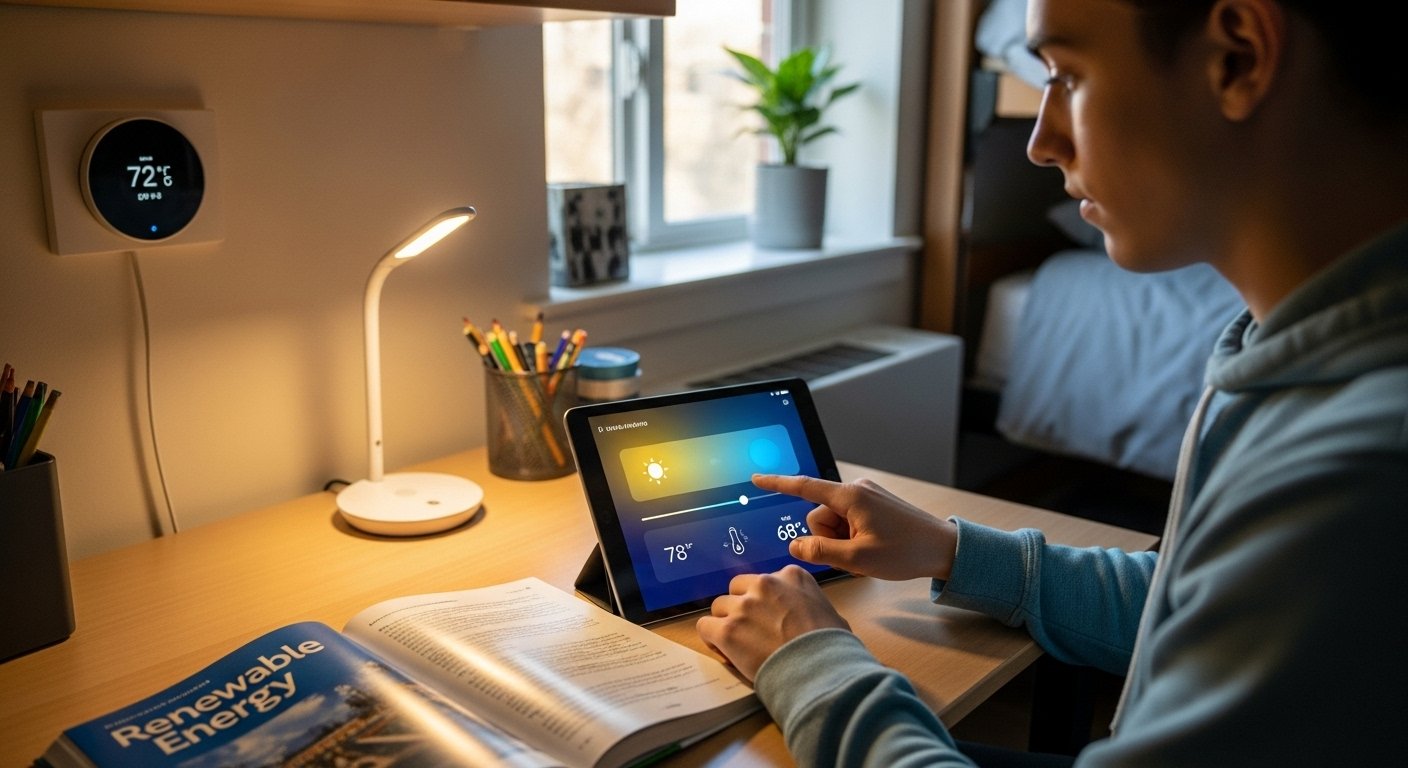
How to Start a Smart Home for Beginners: Your First Steps
Starting your smart home journey doesn’t have to be overwhelming. The best way to begin is to identify your primary needs and start small. Don’t try to automate your entire home at once! Think about what aspects of your daily life could be made easier or more efficient. Do you often forget to turn off the lights? Are you concerned about home security? Or do you simply want to make your mornings smoother? These questions will guide your initial choices. This ‘How-to Guide’ will help you with a simple smart home setup.
A common entry point for many is entertainment systems, with 61% of adopters using smart TVs, displays, or speakers in 2024 [13]. However, the real value for a smart home for beginners often lies in simpler, foundational devices.
Essential Smart Home Devices for Beginners
When considering what devices do I need for home automation, focus on simplicity and impact. Here are some of the best smart home devices for beginners:
#### The Brain: Smart Home Hubs and Voice Assistants
One of the first questions many ask is, “Do I need a smart home hub?” Not necessarily for every device, as some connect directly to your Wi-Fi network [36]. However, a smart home hub for beginners (or a compatible smart speaker) acts as a central command center, allowing different devices to communicate, even if they use different wireless technologies like Wi-Fi, Bluetooth, Zigbee, or Z-Wave [21], [30]. It simplifies control by bringing all your devices under one app, making your smart home ecosystem more cohesive [16], [34].
Popular voice assistants like Amazon Alexa (via Echo devices), Google Assistant (via Google Nest devices), and Apple HomeKit (via HomePod or Apple TV) can serve as your primary interface, often with built-in hub capabilities [19], [33]. Choosing one of these ecosystems early on can simplify future device compatibility. For instance, Google Home leads the market with a 30% share, making it the most popular smart home management app in 2025, followed by Amazon Alexa (25%) and Apple HomeKit (20%) [13]. Your existing Wi-Fi network is the backbone of most smart home setups, so ensure it’s strong and reliable [38].
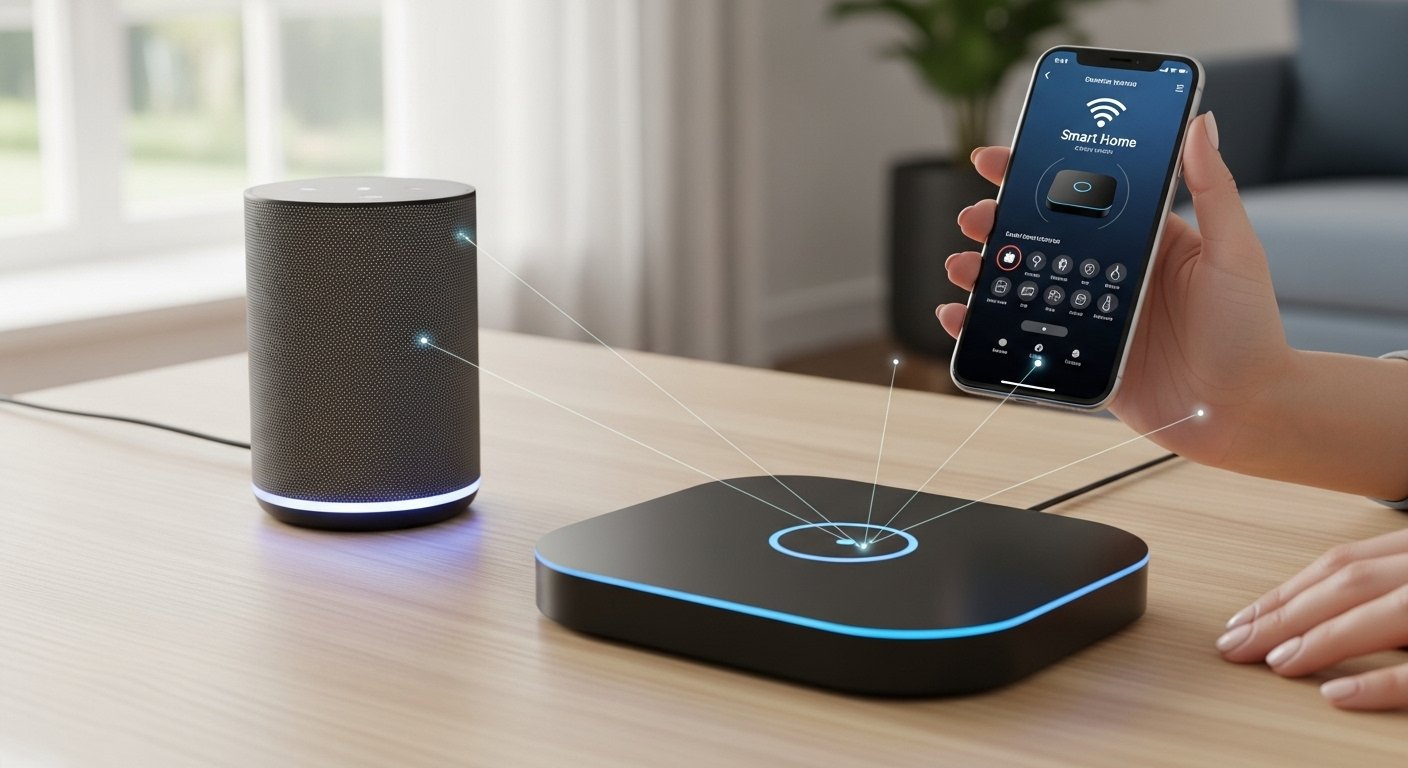
#### Easy Wins: Smart Plugs and Smart Lighting
Smart Plugs: These are arguably the simplest and most affordable entry point into smart home technology. Simply plug an existing appliance into a smart plug, and it instantly becomes “smart.” You can then control it from your smartphone or with voice commands. Perfect for lamps, coffee makers, or fans, smart plugs allow you to set schedules and turn devices on/off remotely [19]. They are excellent beginner smart home devices and offer easy smart home ideas to get started.
Smart Lighting: Replacing traditional bulbs with smart lighting is another impactful first step. Smart bulbs allow you to control brightness, color, and schedules via an app or voice. They can also save energy by turning off when not needed [29]. For new users, starting with a few bulbs in a key area, like your living room or bedroom, can make a big difference in ambiance and convenience [19].
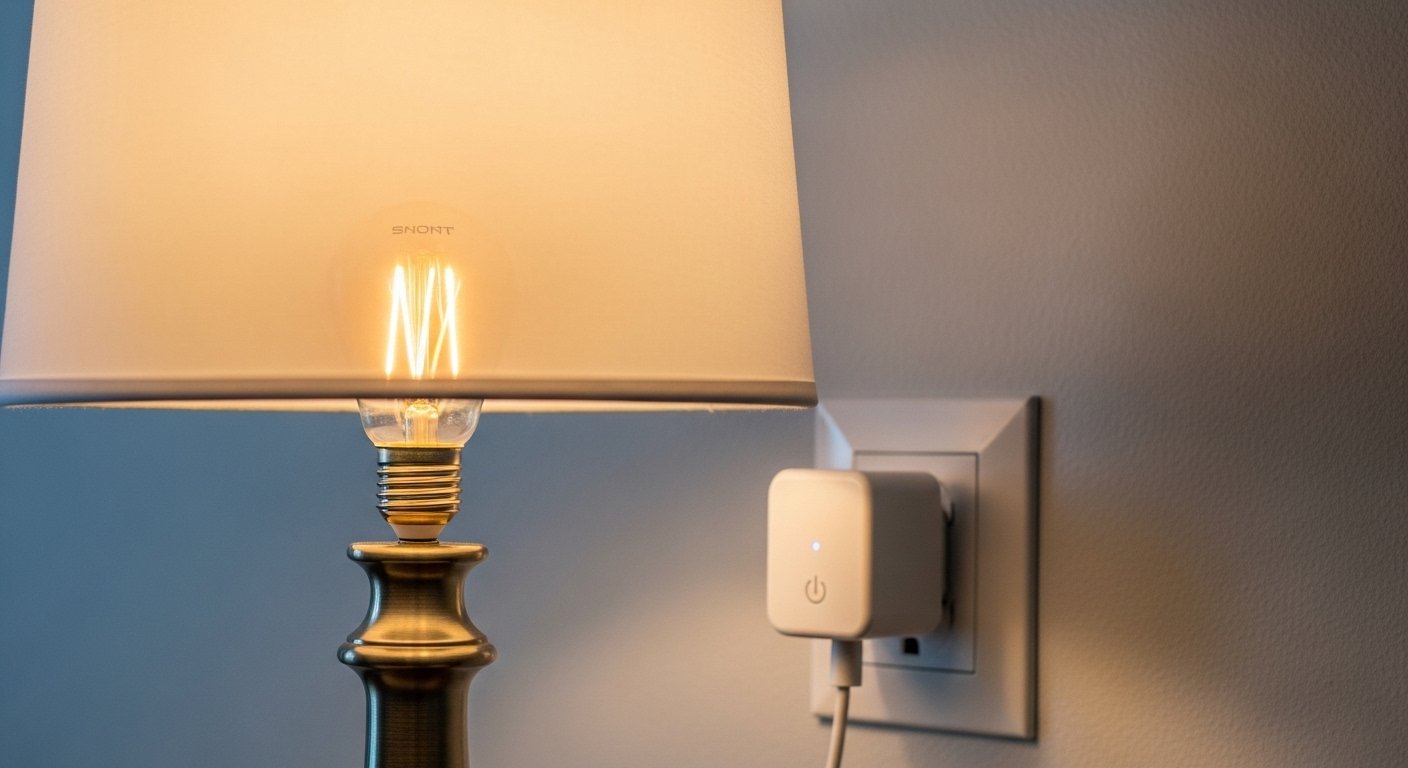
#### Comfort and Efficiency: Smart Thermostats
A smart thermostat, like those compatible with Amazon Alexa or Google Assistant, offers significant benefits in comfort and energy efficiency. These devices learn your routines, adjust temperatures automatically, and can be controlled remotely. This means you can warm up your home before you arrive or ensure energy isn’t wasted heating an empty house [39]. They contribute directly to lowering your utility bills and make managing your home’s climate effortless [27], [31].
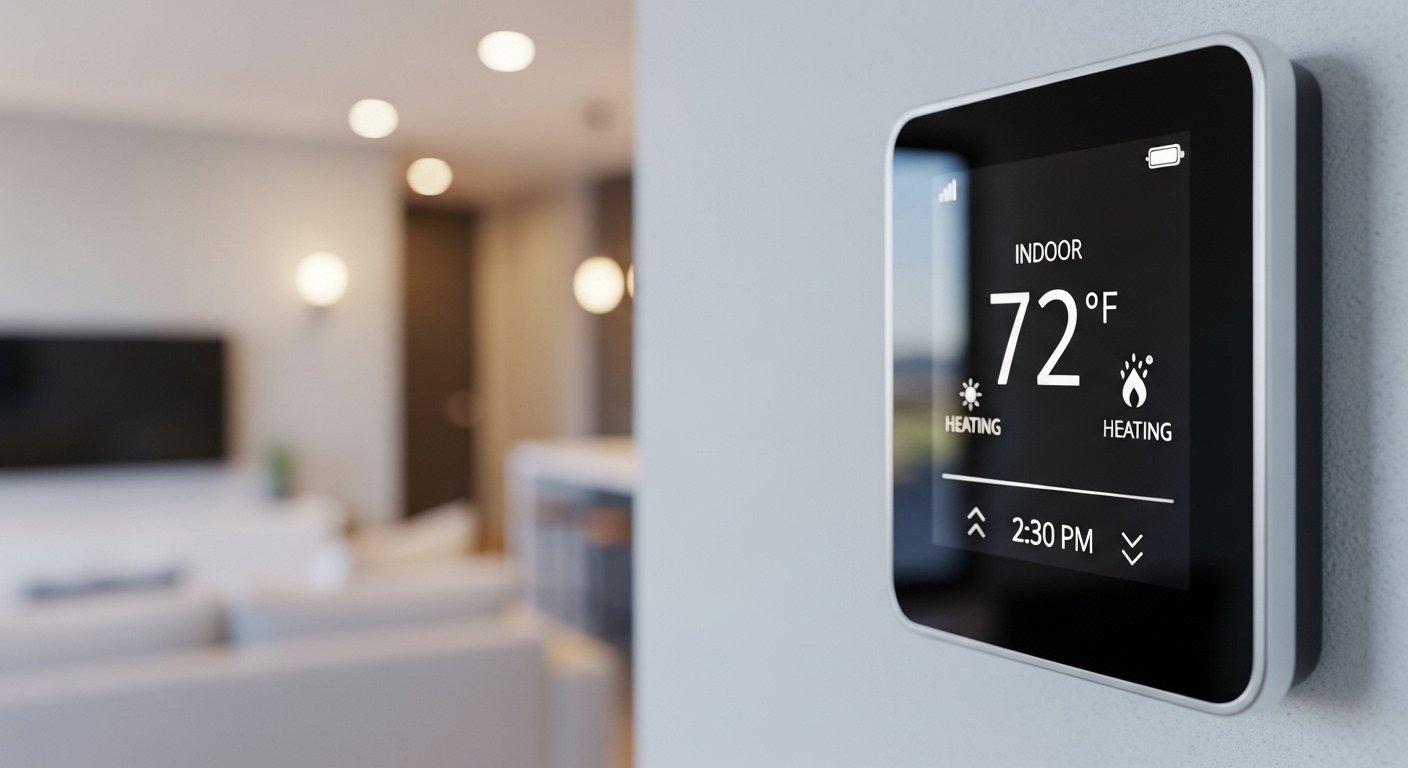
#### Basic Security: Smart Doorbells and Simple Security
For smart home security for beginners, consider devices that offer peace of mind without complex installation. A video doorbell allows you to see and speak to visitors from anywhere using your smartphone [18]. Smart locks enable keyless entry and remote locking. These devices can integrate with your voice assistant and offer mobile alerts, providing a foundational layer of home security [5], [23].
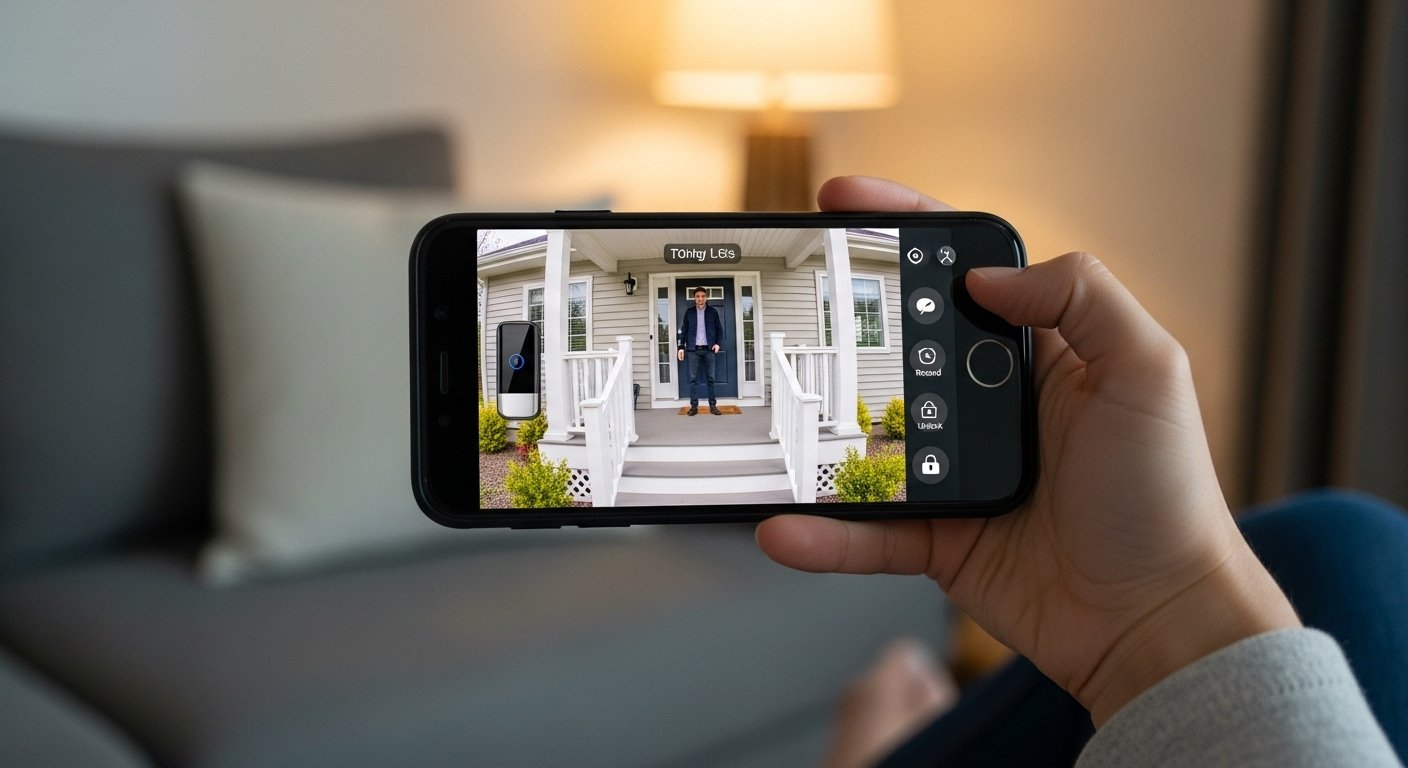
Setting Up Smart Home Devices: A Simple Smart Home Setup Guide
Learning how to set up smart home devices is generally straightforward, designed for ease of use. Here’s a general guide for a simple smart home setup:
1. Check Your Wi-Fi: Ensure you have a stable and strong Wi-Fi network throughout your home. Most smart devices rely on Wi-Fi for connectivity [38]. For larger homes, a mesh Wi-Fi system might be beneficial [19].
2. Choose Your Platform: Decide whether you’ll primarily use Amazon Alexa, Google Assistant, or Apple HomeKit as your central control platform [19]. This helps ensure compatibility among your chosen devices.
3. Install the Device: Follow the manufacturer’s instructions carefully. Many devices simply plug in, while others, like smart thermostats, might require minor installation. Smart bulbs screw in like regular bulbs [19].
4. Download the App: Most smart devices have a dedicated app. Download it to your smartphone or tablet, create an account, and follow the on-screen prompts to connect the device to your Wi-Fi network and your chosen smart home platform [19]. This often involves scanning a QR code [33].
5. Test and Customize: Once connected, test the device’s functionality. Can you control it with the app? Does your voice assistant respond to commands? Start exploring basic automations and routines. For example, you can use IFTTT (If This, Then That) to create simple rules that link different devices and services, like turning on lights when a motion sensor is triggered [6], [35]. IFTTT provides a user-friendly way to create custom automations without needing complex coding [44], [45].
Regularly update your devices and apps to ensure they have the latest features and security patches [18], [19]. This is crucial for both functionality and protecting your smart home.
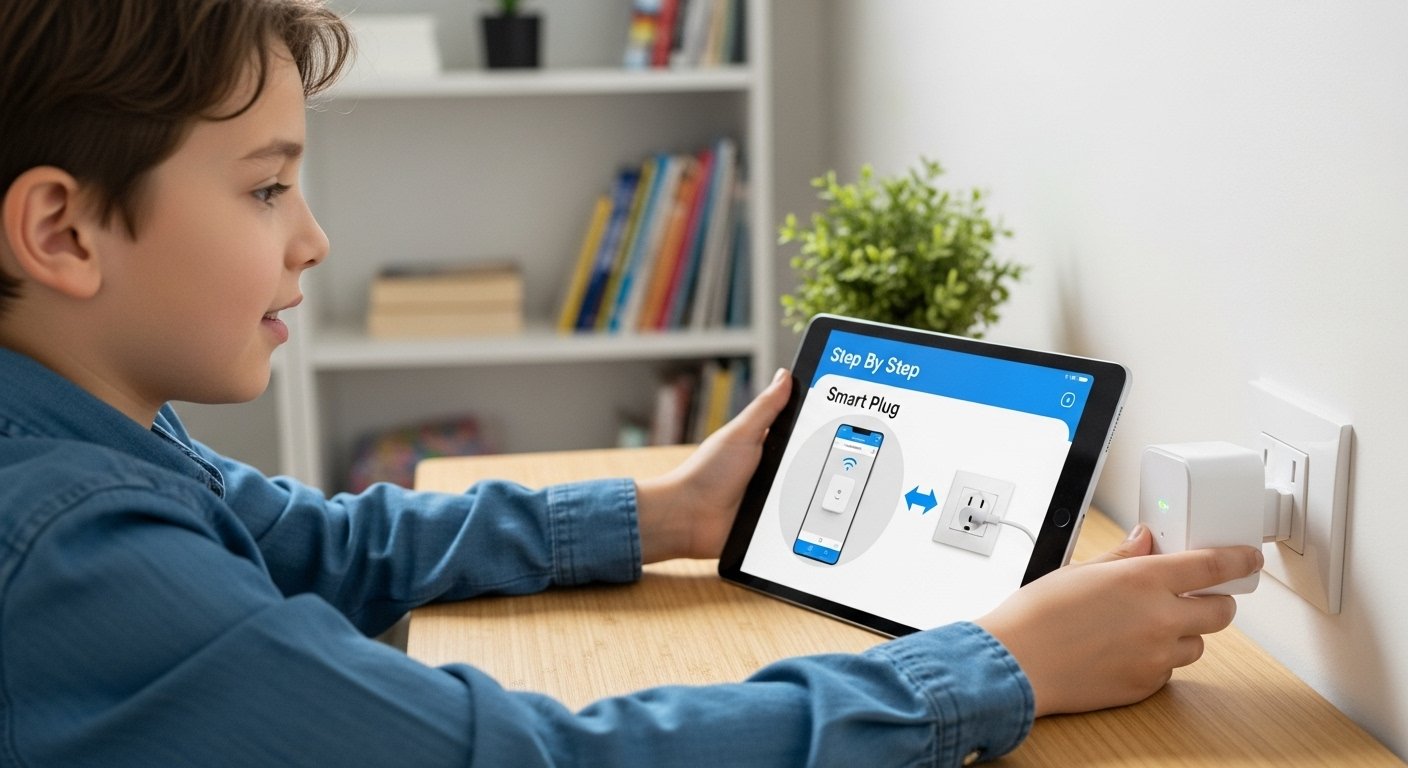
Budgeting Your Smart Home: Is Smart Home Expensive to Set Up?
One common concern is the cost of smart home for beginners. While it’s true that a fully automated home can be a significant investment, starting a smart home doesn’t have to break the bank. You can begin with budget smart home ideas and gradually expand your system as your needs and budget allow. The average annual spending per smart home user on devices and automation services is around $2,500 [13], but this typically reflects users with more extensive setups.
- Start small: Smart plugs and smart bulbs are very affordable, often costing less than $20-30 each.
- Prioritize: Focus on devices that offer the most value for your lifestyle, whether it’s energy savings from a smart thermostat or peace of mind from a video doorbell.
- Look for sales: Smart home devices are frequently on sale, especially around holidays. You can often find a good smart home starter kit at a reasonable price, which bundles essential devices.
The long-term energy savings offered by smart home technology can also help offset the initial investment, making it a cost-effective choice over time [9], [27].
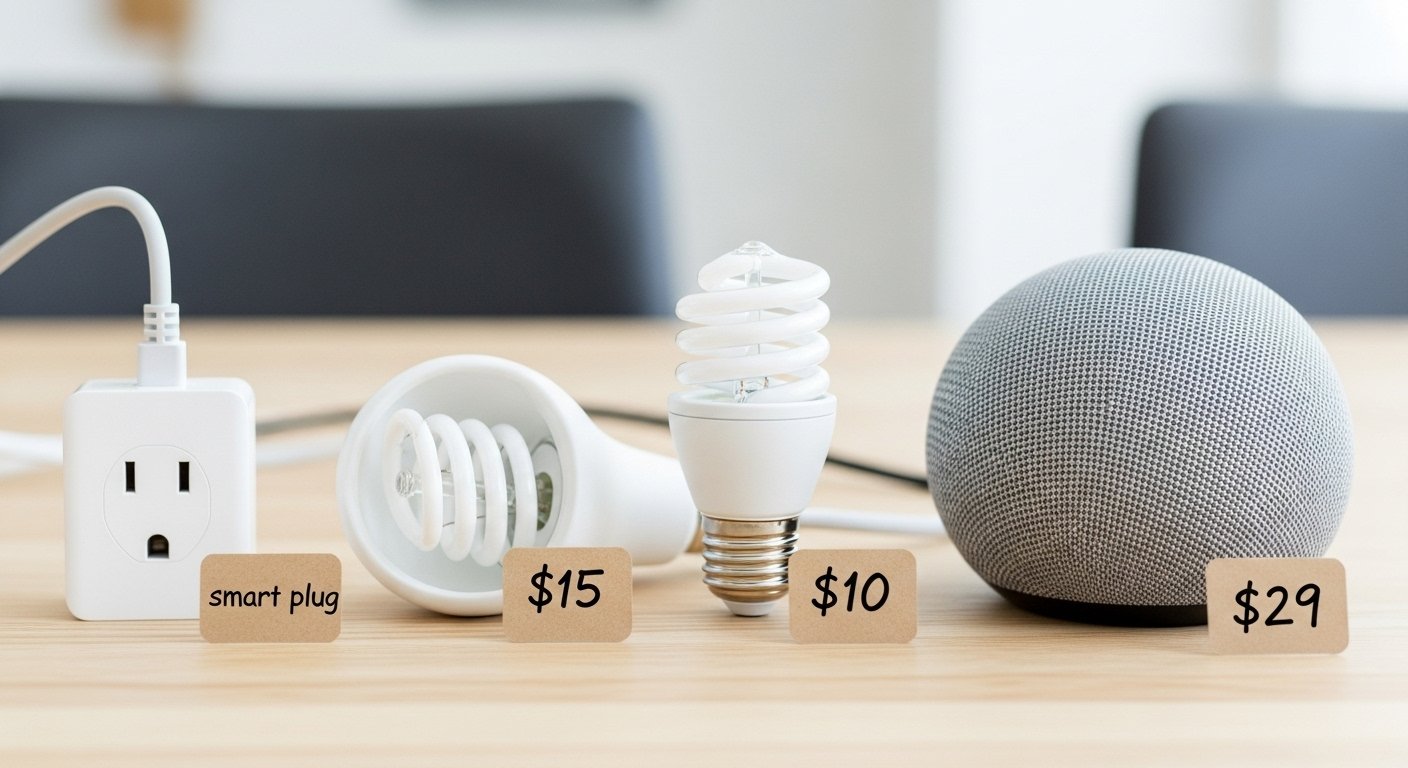
Expanding Your Smart Home Ecosystem
Once you’re comfortable with your initial smart home setup, you can begin to explore more advanced automations and integrations. This is where the true power of home automation shines, allowing your devices to work together in intelligent ways.
- Creating Routines and Automations: Beyond simple on/off commands, you can set up routines that trigger multiple actions with a single command or based on a schedule. For example, a “Good Morning” routine could turn on your lights, start your coffee maker, and play the news [6]. This can also extend to security, such as having lights turn on automatically when a camera detects motion after sundown [18], [37].
- Geofencing: Many smart home systems allow for location-based control using your smartphone’s GPS. This means your lights can turn on automatically as you approach your home, or your thermostat can adjust when you leave [38].
- Ensuring Network Stability: As you add more devices, it’s crucial to maintain a robust Wi-Fi network. Consider a mesh Wi-Fi system for larger homes to ensure consistent coverage and performance for all your connected devices [38].
As the market continues to grow, with 78% of homebuyers in 2025 preferring listings with pre-installed smart home technology [13], the value and convenience of a well-integrated smart home ecosystem will only increase. Whether you’re aiming for increased convenience, better energy management, or enhanced security, smart home automation offers a flexible and rewarding path to a more connected living space.
Key Takeaways
Key Takeaways
- **Start Simple:** Begin your smart home journey with a few essential devices like smart plugs or smart lighting to avoid feeling overwhelmed.
- **Choose a Platform:** Decide on a voice assistant ecosystem (Amazon Alexa, Google Assistant, or Apple HomeKit) early on for better device compatibility.
- **Understand Hubs:** While not always strictly necessary, a smart home hub can centralize control and improve communication between diverse devices.
- **Prioritize Needs:** Identify what benefits you most – be it energy savings, convenience, or basic security – to guide your initial smart device purchases.
- **Budget Smart:** Smart homes don’t have to be expensive; start with affordable devices and expand gradually as your needs and budget grow.
- **Embrace Automation:** Use features like routines and IFTTT to link devices and create intelligent, time-saving actions in your home.
Authoritative Resources
- For a comprehensive overview of home automation, visit Wikipedia: Home Automation.
- To learn more about creating custom automations between different apps and devices, explore the official IFTTT Website.
Frequently Asked Questions
What are the basics of a smart home?
The basics of a smart home involve connecting everyday devices like lights, thermostats, and security systems to a central network, allowing them to be controlled remotely or automated. Key components often include a smart hub or voice assistant and internet-connected smart devices [6].
How do I start a smart home for beginners?
To start a smart home for beginners, identify your main needs (e.g., saving energy, convenience). Begin with simple, impactful devices like smart plugs or smart lighting. Choose a compatible ecosystem (Amazon Alexa, Google Assistant, or Apple HomeKit) to ensure your devices work well together [19].
What are essential smart home devices?
Essential smart home devices for beginners often include smart plugs, smart lighting, smart thermostats, and basic smart security devices like video doorbells. These devices offer significant benefits in convenience, energy savings, and peace of mind [19].
Is a smart home expensive to set up?
Setting up a smart home doesn’t have to be expensive. You can start with affordable devices like smart plugs or single smart bulbs for less than $30. The cost can increase with more advanced devices and extensive automation, but you can build your smart home gradually according to your budget [13].
Do you need a hub for smart home devices?
While not all smart devices require a dedicated hub (some connect directly to Wi-Fi), a smart home hub or a smart speaker with hub capabilities (like Amazon Echo or Google Nest Hub) can significantly improve device compatibility, centralize control, and enable more complex automations, especially when using devices from different brands or with different communication protocols [21], [34].
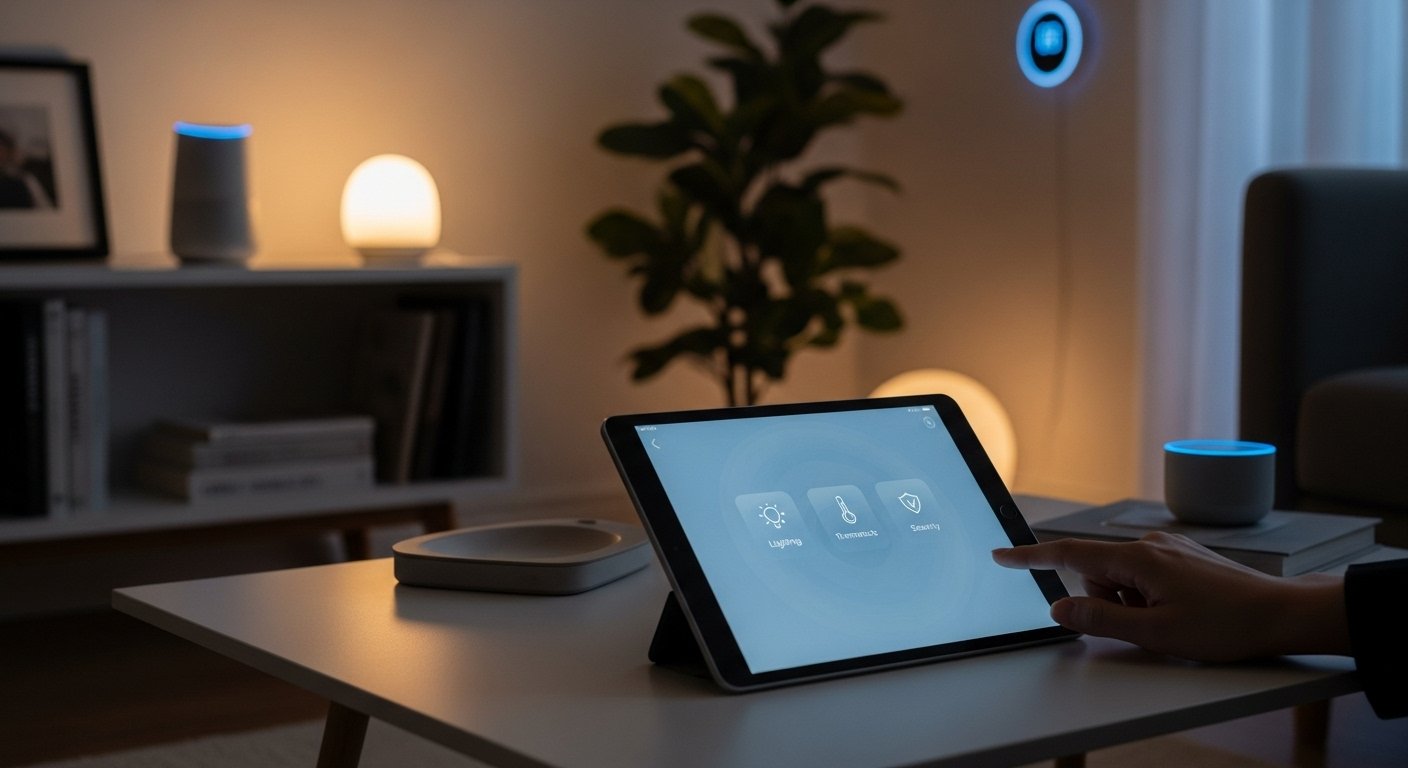
Leave a Reply